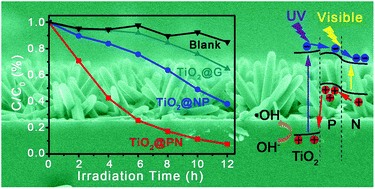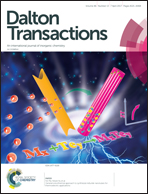UV and visible light synergetic photodegradation using rutile TiO2 nanorod arrays based on a p–n Junction†
Abstract
Herein, we report a photocatalytic heterojunction device of rutile TiO2 nanorod arrays based on a p–n silicon junction (TiO2@PN) and its full absorption of ultraviolet and visible light for synergistic photodegradation. The fabricated TiO2@PN had excellent photocatalytic degradation of methyl orange (MO) under irradiation of a 300 W Xe lamp, and its pseudo-first-order rate constant k was 0.221 h−1, which was greatly higher than that for TiO2 nanorod arrays based on an n–p silicon junction (TiO2@NP, 0.078 h−1) and glass (TiO2@G, 0.032 h−1). The higher photocatalytic performance of TiO2@PN could be attributed to the fact that the photovoltage (PV) of the p–n junction promotes separation of the electron–hole pairs of the TiO2, and the holes are thus left within the TiO2 nanorods to produce a strong oxidant of hydroxyl radicals (˙OH). Moreover, this heterojunction device could be easily fabricated in a large size for easy recovery and recycling, which shows its promise in the solar-driven degradation of environmental pollution.



 Please wait while we load your content...
Please wait while we load your content...